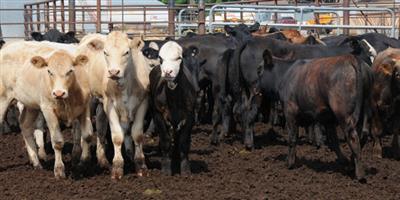The last few weeks have witnessed market volatility and disruptions that few, if any cattle producers have ever seen. That uncertainty is leading cattle producers to question the best strategy to market any cattle they have on inventory.
Unfortunately, there are no easy answers. We are dealing with nearly unprecedented market conditions and attempting to predict the future is a fool’s game at best. One thing we can do is to separate cattle by classes and look at the production and marketing options available. The correct option depends a great deal on cash flow needs, feedstuff availability, and an operation’s capacity for risk.
Near Ready Finishing Cattle
There are very few good options for cattle that will be market ready in the next 90 days. Increasing roughage content could slow growth rate and extend the feeding period, but by this point those changes will have little impact on cattle marketing time point. Cattle being fed a beta-agonist have an even more restrictive market window as the labeled duration of feeding ranges from 28 to 42 days. The biggest risk today is if the feeding industry is unable to stay current resulting in greater numbers of heavy cattle getting fatter that need to find an outlet. That usually means even lower prices as the supply chain works through increased beef tonnage. Add in uncertainty surrounding plant closures and the corresponding risk of delivery difficulties, the best option for these cattle is to ship on time rather than waiting for anticipated market improvement later in the year.
Heavy Backgrounded/Lightweight Finishing Cattle
These cattle could be fed a less energy dense diet to slow gains and extend the feeding period. The trade-off is poorer efficiency and increased yardage costs. However, this option could be worthwhile if the overall market improves. Feedlots with ample inventories of corn silage or other roughage sources already on hand are the best candidates for this strategy. The University of Nebraska recently published a study comparing diets with either 14, 47, or 80 percent corn silage on a dry matter basis. Days on feed to reach the same fat thickness increased from 168 for the 14% corn silage diet to 195 or 238 days for diets containing 47 or 80 percent corn silage. Hot carcass weight increased with greater amounts of corn silage in the diet with no change in marbling score.
What about implants under these scenarios? On the surface not implanting as a way to lengthen the feeding period might seem logical because implants increase ADG. However, implants result in cattle that are leaner and heavier at the same number of days, so the net result of not implanting is cattle reaching their fat target earlier and at a lighter weight. Implant potency does need to be matched to dietary energy concentration. High potency implants (i.e. Revalor-200, Synovex Plus, and Component TE-200) are best suited for diets greater than 60 Mcal Neg. Extended release implants could be a viable option for longer feeding periods.
Lightweight Cattle
Producers with light-weight cattle and forage resources have additional options. These cattle could be kept in the drylot on a high forage diet, sent to pasture for summer grazing, or grazed on annual forages. The last strategy is not necessarily common but could be an attractive option especially considering the uncertain economics of crop production this year. An added benefit to these systems is that these cattle should be ready for slaughter in the 4th quarter of the year when prices are often seasonally higher.
What About Effects on Carcass Quality?
Carcass merit probably is not top of mind right now for most people, after all a grid premium on top of a terrible base price still does not result in enough final value. However, carcass merit is important and shouldn’t be ignored.
Hot carcass weight tends to increase as with extended feeding periods with lower energy diets when cattle are harvested at the same fat end point. Marbling can be reduced if energy intake is greatly limited or if cattle are implanted too aggressively. Marbling should not be limited by lower energy diets if cattle are gaining at least 2.5 pounds per day.
###
Warren Rusche – SDSU Extension Beef Feedlot Management Associate
iGrow SDSU
Northern Ag Network


